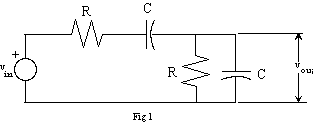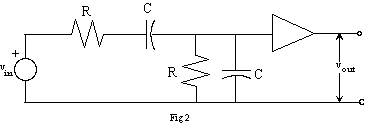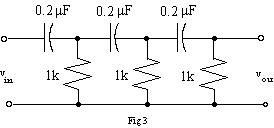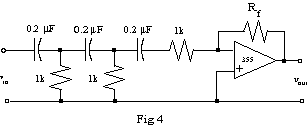
Lab 10: Wien Bridge and Phase Shift Oscillators
The importance of oscillators in electronics is illustrated in this excerpt from The Art of Electronics by Horowitz and Hill:
Within nearly every electronic instrument it is essential to have an oscillator or waveform generator of some sort. Apart from the obvious cases of signal generators, function generators, and pulse generators themselves, a source of regular oscillations is necessary in any cyclical measuring instrument, in any instrument that initiates measurements or processes, and in any instrument whose function involves periodic states or periodic waveforms. For example, oscillators or waveform generators are used in digital multimeters, oscilloscopes, radiofrequency receivers, computers, every computer peripheral (tape, disc, printer, alphanumeric terminal), nearly every digital instrument (counters, timers, calculators, and anything with a ``multiplexed display''), and a host of other devices too numerous to mention. A device without an oscillator either doesn't do anything or expects to be driven by something else (which probably contains an oscillator). It is not an exaggeration to say that an oscillator of some sort is as essential an ingredient in electronics as a regulated supply of dc power.
Wien bridge and phase shift oscillators are good ways to produce low-distortion sinusoidal signals at low to moderate frequencies. These oscillators are circuits for which the output is equal to the input at a given frequency. For such a circuit, when the output is connected back to the input, a self-sustaining oscillation takes place at the given frequency.
1) Find the transfer function for the circuit shown using nodal analysis in the s-domain. Calculate values for R and C such that the phase shift between the output and input is zero for an input frequency of 10 kHz. Calculate the amplitude ratio of the output and input at this frequency.

2) Build the circuit. With a sinusoidal input, observe the phase shift between input and output. Find the frequency at which the phase shift is zero, and compare to the design frequency of 10 kHz. Measure the amplitude ratio of the output to the input, and compare to the value calculated in Part 1.
3) Connect a non-inverting amplifier using a 355 op--amp as shown, and adjust the gain of the amplifier and the frequency of the function generator until the amplitude and the phase of the output equal those of the input. (Include a pot in the amplifier circuit to make the gain adjustable.)

4) When the input is the same as the output, disconnect the input from the signal generator and connect it to the output. With a little adjustment of the gain, the circuit should oscillate with a nice sine wave. Measure the frequency, and compare to the design frequency and to the frequency measured in Part 2.
5) The RC network in Figure 3 can produce a phase shift of 180° at any desired frequency. Calculate what this frequency is for the network values given. (Use nodal analysis in the s-domain to find T(s). For a 180° phase shift, T(jw) must be a real negative number. To find the frequency where this occurs, find the value of w which makes the imaginary part of T(jw) zero.) Build the circuit, with a sinusoidal input, and adjust the frequency of the function generator until the phase shift is 180°. Compare to the calculated frequency. What is the gain of the circuit? How does this compare to |T(jw)|?

6) To make an oscillator, we need 0° or 360° of phase shift. Supply the extra phase shift with an op-amp inverting amplifier. The op-amp circuit can also supply the gain needed to make the input and output equal. Design and build the amplifier with adjustable gain. (The final 1 kohm should become the input resistor, as it effectively goes to ground in both cases.) Adjust the gain and frequency until vout = vin.
7) Complete the oscillator by reconnecting the input to the output. Adjust the gain for an undistorted sine wave. Measure the frequency. How does this compare to the design frequency?
